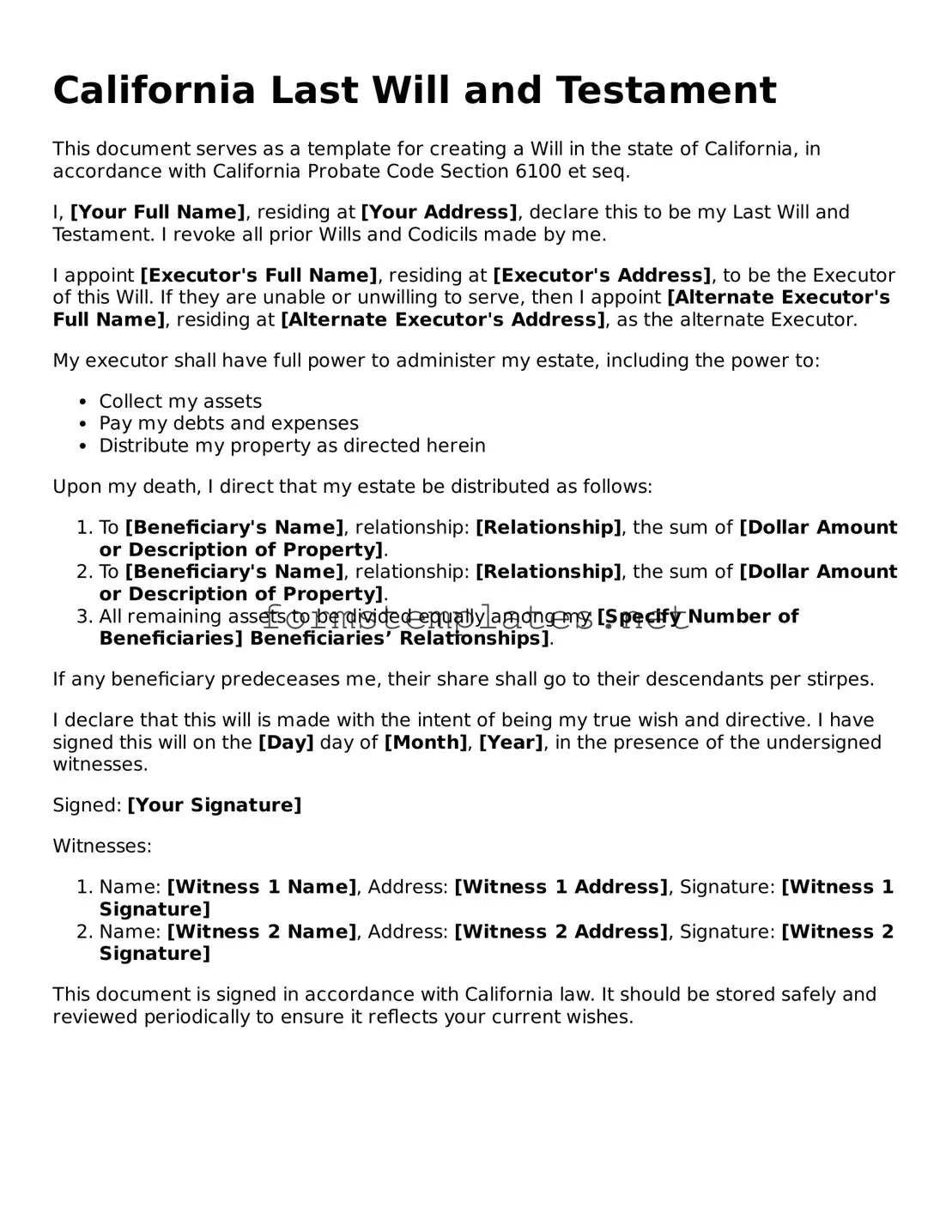California Last Will and Testament
This document serves as a template for creating a Will in the state of California, in accordance with California Probate Code Section 6100 et seq.
I, [Your Full Name], residing at [Your Address], declare this to be my Last Will and Testament. I revoke all prior Wills and Codicils made by me.
I appoint [Executor's Full Name], residing at [Executor's Address], to be the Executor of this Will. If they are unable or unwilling to serve, then I appoint [Alternate Executor's Full Name], residing at [Alternate Executor's Address], as the alternate Executor.
My executor shall have full power to administer my estate, including the power to:
- Collect my assets
- Pay my debts and expenses
- Distribute my property as directed herein
Upon my death, I direct that my estate be distributed as follows:
- To [Beneficiary's Name], relationship: [Relationship], the sum of [Dollar Amount or Description of Property].
- To [Beneficiary's Name], relationship: [Relationship], the sum of [Dollar Amount or Description of Property].
- All remaining assets to be divided equally among my [Specify Number of Beneficiaries] Beneficiaries’ Relationships].
If any beneficiary predeceases me, their share shall go to their descendants per stirpes.
I declare that this will is made with the intent of being my true wish and directive. I have signed this will on the [Day] day of [Month], [Year], in the presence of the undersigned witnesses.
Signed: [Your Signature]
Witnesses:
- Name: [Witness 1 Name], Address: [Witness 1 Address], Signature: [Witness 1 Signature]
- Name: [Witness 2 Name], Address: [Witness 2 Address], Signature: [Witness 2 Signature]
This document is signed in accordance with California law. It should be stored safely and reviewed periodically to ensure it reflects your current wishes.
